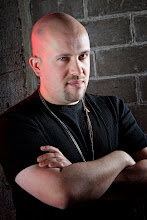Silent Hill is kind of a weird franchise.
The first Silent Hill came out roughly around the same time as the original Resident Evil, making it one of the longest running video game franchises to date. The players made their way through the foggy streets of Silent Hill searching for your adopted daughter and gradually unraveling the secrets of the town. As the series went on, the mythology got more convoluted but the characterization became much richer. Unlike Resident Evil, where the characters because more and more invincible, the protagonists in Silent Hill became more and more vulnerable and human. The town itself became a sort of terrible crucible, forcing its hapless victims to confront their personal demons, often to grim results.
Silent Hill: Shattered Memories reboots the franchise at the first game, jettisoning the convoluted Cult/Alessa mythology that bogged down much of the earlier games. The story again revolves around Harry Mason's search for his daughter amid the snowy streets of Silent Hill. His search occasionally leads him into shadowy nightmare realms, much like the Otherworlds of previous games, where faceless screaming things chase him across a frozen landscape.
The game's big selling point is that it plays you while you're playing it, that actions you take during gameplay influence which ending you get. Most of this is accomplished by a framing device where the player interacts with a therapist. It's a great idea in theory, but too much of it relies on yes-no questions during the therapy sessions. The only elements in gameplay that tips the result are really minor, petty things: if you linger your gaze too long on alcoholic beverages you get the drunk ending; if you stare too hard at pin-up posters you get the lusty dad ending. I would have been much happier with the game if more of the mindfuckery occurred in the game, not through the Q-and-A sessions.
Most of the game suffers from similar great idea/poor execution problems. The nightmare sequences in particular were a really good idea. You can't actually fight the creatures that come after you and so each sequence becomes a heart-pounding chase through the tundra of the protagonist's soul. While this sounds neat in practice, the lack of guides and signposts mean that you'll spend most of the chase scene running around in circles. This gets really, really frustrating. It took about a half-dozen run throughs before I got comfortable enough in these sequences to know where the hell I was going.
These things both sound like huge negatives, but I really enjoyed Silent Hill: Shattered Memories. The game's storyline and twist ending, while preposterous, was still pretty captivating. The variations in personality types keeps it pretty varied and exciting. I also liked the game's creepy sexuality. Without giving too many twists away, most of the hauntings in the game have a strongly sexual component, done with a depth and maturity not often found in the medium. Finally, the game's music, which is always a strong point in Silent Hill games, was spectacular. I particularly liked the sadly nostalgic song the girl sings in the high school auditorium.
For all the game's flaws, creating a playground out of a damaged psyche makes for a chillingly good time. This is definitely one to check out.

















